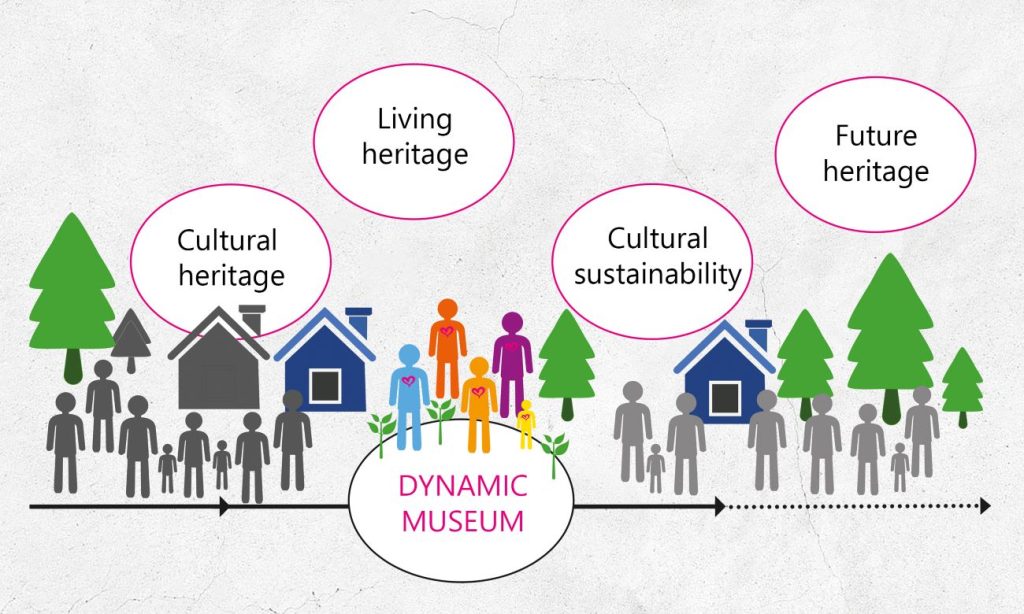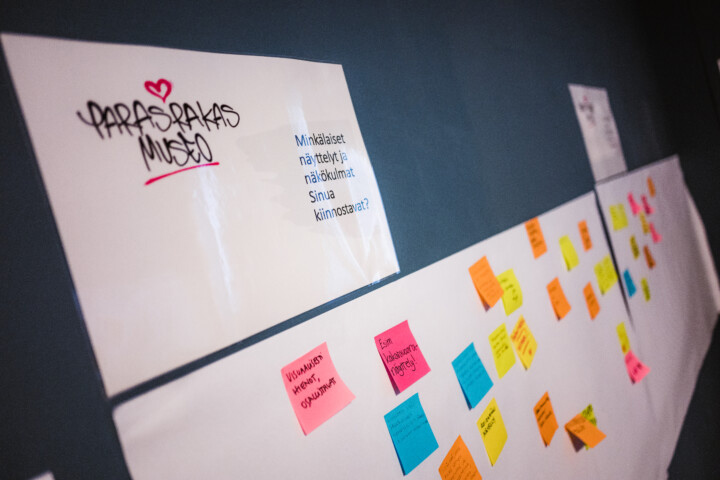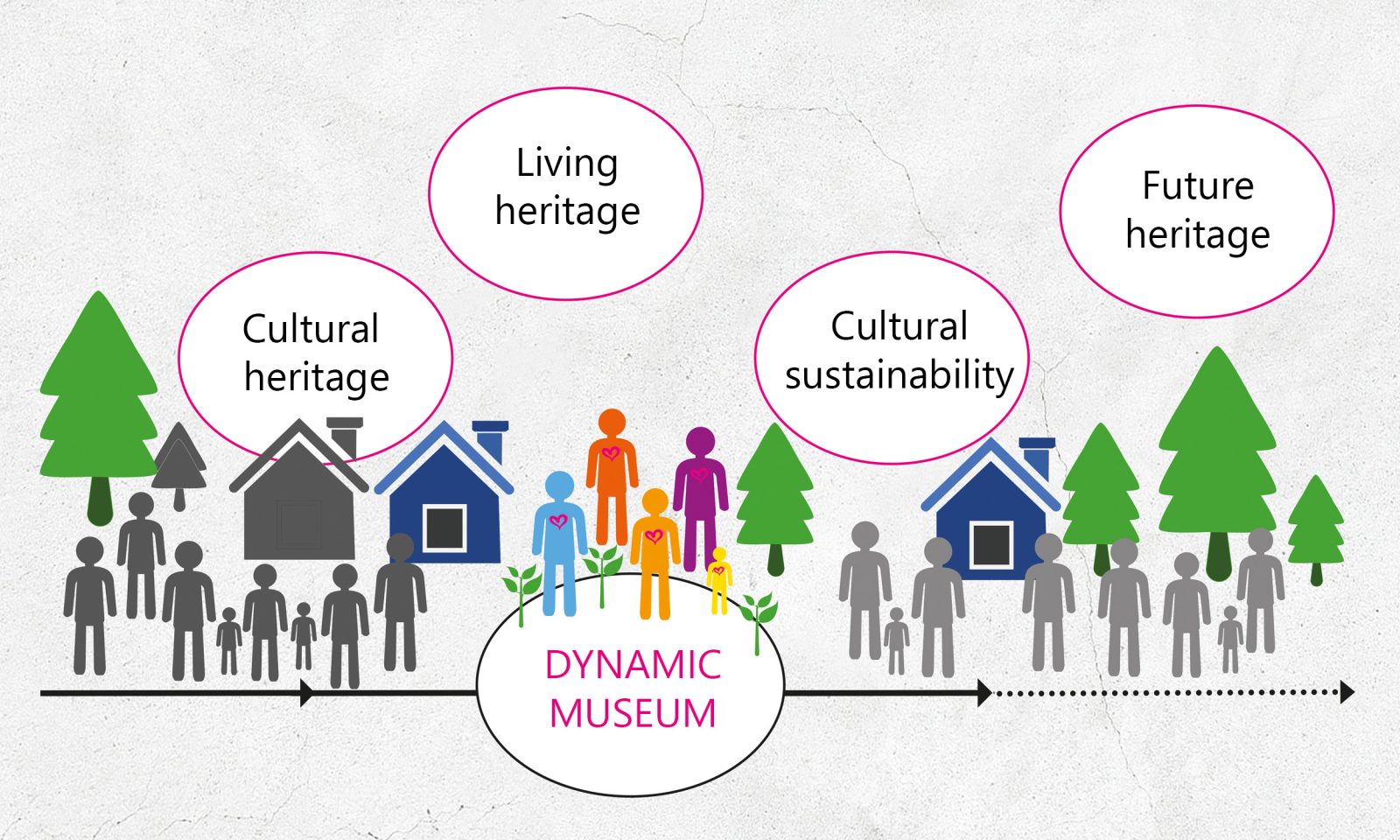Ecocultural education refers to the possession of skills that are important for nature and other people, such as the ability to think about the consequences of one’s consumption habits and choices. With climate change and the narrowing of biodiversity, there is an increasing global need for this type of education. Ecocultural education concerns us all because we need a significant and purposeful change in our lifestyle, guiding us to live within the limits of nature’s carrying capacity in the future.
Only people together can make this change happen. As it involves a cultural shift, cultural researchers and experts in culture, such as museums, are at its core. Museums have the ability to examine long time spans, developmental lines, and broad contexts, as well as understand people’s daily lives and challenges at different times, places, and contexts. Together with their users, museums can open new perspectives, generate ideas, create hope, and inspire change and action.

The idea of a dynamic museum: PhD Leena Paaskoski & Lusto. Photo editing: Northern Ostrobothnia Museum
The Northern Ostrobothnia Museum is a dynamic museum
In its major reform process, the Northern Ostrobothnia Museum has relied on a socially impactful and museum-industry intriguing approach of a dynamic museum. A dynamic museum operates in society where it is needed, for example, on ecological reconstruction sites. It is not just a place, exhibition, destination, or collection but can be present in various ways and anywhere, where interaction between people, societal discussion, and cultural change are needed. The dynamic museum’s focus is on the future, with a mind in the present. However, it differs from many other societal actors in that it has the past actively remembered. The key tools of a dynamic museum are time dimensions and living heritage, information, skills, worldviews, and actions, which can only be nurtured in living individuals. It always operates where people and communities are and together with them.
The Northern Ostrobothnia Museum will open completely renewed in Myllytulli in 2026, and the new museum building is designed with a low threshold and a wide door. However, as a dynamic museum, the Northern Ostrobothnia Museum can already be present in the everyday lives of Oulu residents and Northern Ostrobothnians, wherever and right now. The museum is organizing open future heritage workshops for everyone, where participants can collectively ponder what a good future for Northern Ostrobothnia would look like and what meaningful actions residents, decision-makers, individuals, and communities could take now to create a sustainable future heritage. The museum invites everyone to also influence what the new museum will be like.

Museums are often perceived as actors in the past, documenting societal development and telling what changes have occurred. By producing understanding of our past, however, the museum has always influenced society and its development. The future remains uncertain unless we know where we come from or what holds significance for us at this moment. However, a dynamic museum must actively embrace change and influence it purposefully. It requires all of us, but the museum, with its people and communities, has a special expertise in this.
Towards cultural climate change
Oulu aims for a cultural climate change. As a city known for technology, Oulu has the opportunity and a firm intention to bring culture to the forefront, especially accelerated by the cultural capital year 2026. We are accustomed to understanding culture as cultural activities, museum exhibitions, theater performances, concerts, and other cultural events. Still, the concept of culture also encompasses all human activity. We are cultural beings, shaped by our culture, but also shapers of our culture. Culture has been compared to a river, where one cannot step into the same water twice. Culture is constantly changing, and its vitality lies precisely in change. Cultural climate change can now also be interpreted from this perspective.

Cultural climate change could, therefore, also mean a lifestyle change that supports a sustainable future. Museums, with their superpowers, can be crucial agents in this cultural climate change because their ability includes transforming historical knowledge into future skills and thereby increasing people’s, communities’, and society’s ecocultural education. In Oulu and North Ostrobothnia, the museum can be an actor that brings people and forces together, increases understanding of humans as part of nature, helps envision a good future, and creates ways to achieve it.
Author: Leena Paaskoski, Professor of Practice in Museology, University of Jyväskylä
